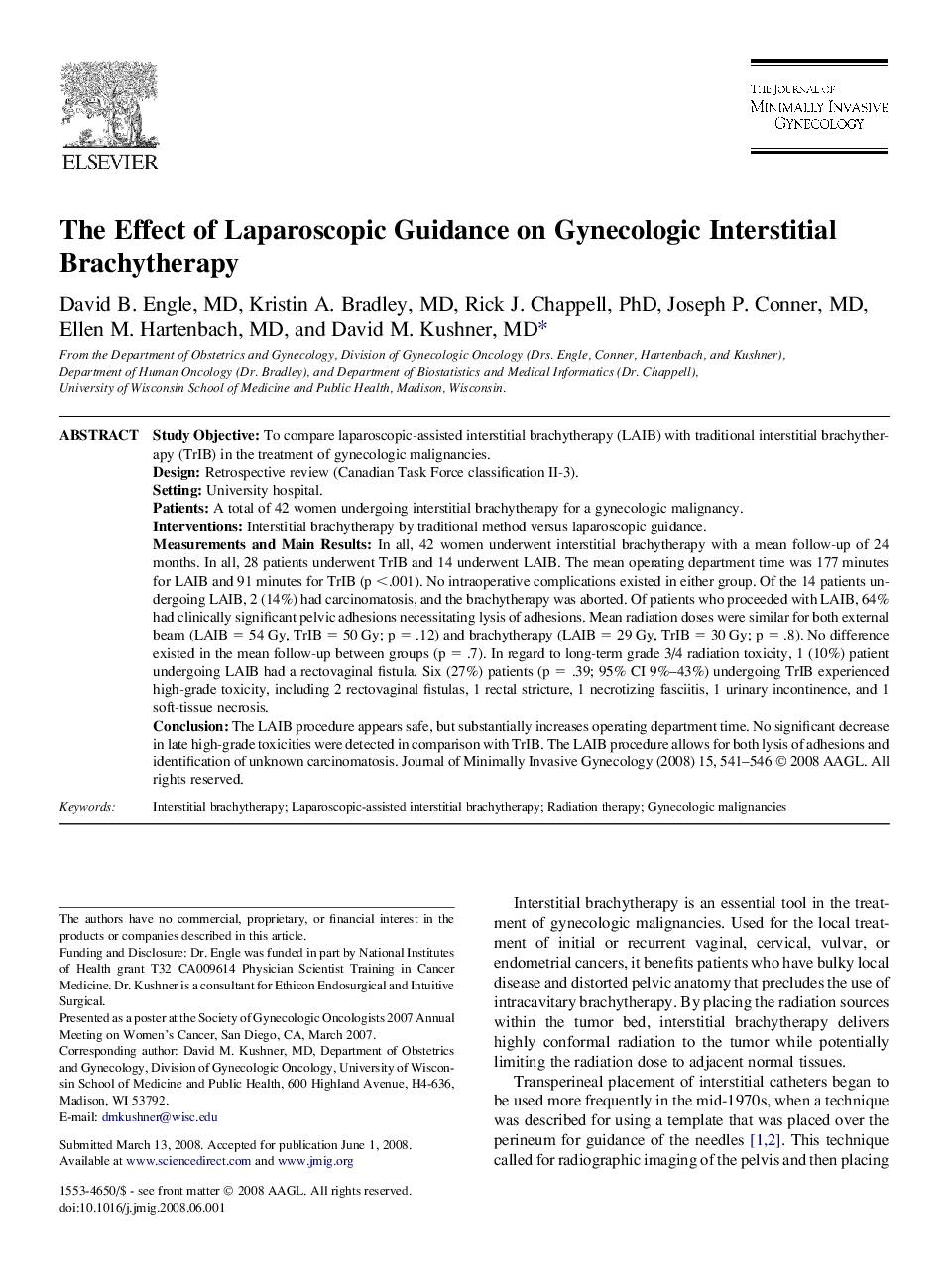| Article ID | Journal | Published Year | Pages | File Type |
|---|---|---|---|---|
| 3954988 | Journal of Minimally Invasive Gynecology | 2008 | 6 Pages |
Study ObjectiveTo compare laparoscopic-assisted interstitial brachytherapy (LAIB) with traditional interstitial brachytherapy (TrIB) in the treatment of gynecologic malignancies.DesignRetrospective review (Canadian Task Force classification II-3).SettingUniversity hospital.PatientsA total of 42 women undergoing interstitial brachytherapy for a gynecologic malignancy.InterventionsInterstitial brachytherapy by traditional method versus laparoscopic guidance.Measurements and Main ResultsIn all, 42 women underwent interstitial brachytherapy with a mean follow-up of 24 months. In all, 28 patients underwent TrIB and 14 underwent LAIB. The mean operating department time was 177 minutes for LAIB and 91 minutes for TrIB (p <.001). No intraoperative complications existed in either group. Of the 14 patients undergoing LAIB, 2 (14%) had carcinomatosis, and the brachytherapy was aborted. Of patients who proceeded with LAIB, 64% had clinically significant pelvic adhesions necessitating lysis of adhesions. Mean radiation doses were similar for both external beam (LAIB = 54 Gy, TrIB = 50 Gy; p = .12) and brachytherapy (LAIB = 29 Gy, TrIB = 30 Gy; p = .8). No difference existed in the mean follow-up between groups (p = .7). In regard to long-term grade 3/4 radiation toxicity, 1 (10%) patient undergoing LAIB had a rectovaginal fistula. Six (27%) patients (p = .39; 95% CI 9%–43%) undergoing TrIB experienced high-grade toxicity, including 2 rectovaginal fistulas, 1 rectal stricture, 1 necrotizing fasciitis, 1 urinary incontinence, and 1 soft-tissue necrosis.ConclusionThe LAIB procedure appears safe, but substantially increases operating department time. No significant decrease in late high-grade toxicities were detected in comparison with TrIB. The LAIB procedure allows for both lysis of adhesions and identification of unknown carcinomatosis.
